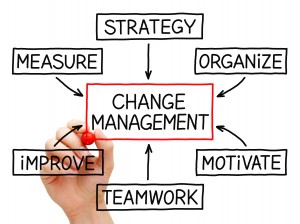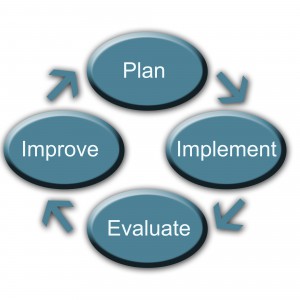 If my history recollection serves me, Vancouver is where Canada’s first real estate board was formed in 1888. The current Real Estate Board of Greater Vancouver (REBGV) has been in continuous operation since 1919. They are also members of a leading regional MLS that encompasses the Fraser Valley Real Estate Board as a partner and the Chilliwack and District Real Estate Board and the British Columbia Northern Real Estate Board as customers.
If my history recollection serves me, Vancouver is where Canada’s first real estate board was formed in 1888. The current Real Estate Board of Greater Vancouver (REBGV) has been in continuous operation since 1919. They are also members of a leading regional MLS that encompasses the Fraser Valley Real Estate Board as a partner and the Chilliwack and District Real Estate Board and the British Columbia Northern Real Estate Board as customers.
Together they transitioned 16,000 Realtors to Black Knight’s Paragon system. Many industry insiders are touting it as the smoothest conversion in history.
WAV Group connected with Eileen Day, Chief Operating Officer, and Mike Pedersen, Chief Information Officer, to get a summary of their change management process where we learned the 7 keys to a successful migration. Each of these is critical to success, so they are in no particular order.
Planning
Every component of their conversion was planned in advance. They developed a plan for everything and spent two years planning ahead. The entire process was engineered in advance, and goals were set for every component of the plan right down to each detail, including specific goals for training attendance, help desk wait times, and communication uptake.
Budget
Very few MLSs plan for the financial stress to the organization in advance. The resources budgeted for conversions will vary from market to market, but if you planning a conversion, you should benchmark between $50 to $100 per user as extraordinary expenses. Done correctly, system conversions are expensive.
Triple Your Staff
Most large MLSs have systems for managing the effectiveness of the help desk, technical, training, and communications operations. In the case of help desk, excellence is maintaining averages of under 2 minutes for answering a call and call time averages in the 3-5 minute range. One major choke point of a conversion is when you overload your systems during the parallel period and once the cut over happens. Under no circumstances do you ever want to let your members down with poor service. As a rule of thumb, factor in a 3x to 4x increase in your staff size for 6 months and provision overflow support from your vendor. In REBGV’s case, the staff went from 6 people to 20 people. Adhere to your benchmarks for hold times and continue to add staff to keep up.
Test, Survey, Analyze
This group did trial runs to test everything. As an example, they tested their training plan and learned that a 2-hour training session was too short, so expanded it. They sought feedback from participants to discover the strengths and weaknesses of the training. They continually modified the program to make it incrementally better and better. They developed Webinars that followed the same process, including a modification to provide Webinars in multiple languages. They tracked online analytics to evaluate email open and click-through rates, website visits, and even the preferences between written communications and video communications. They developed system test cases and ran users through it to record more than 1,500 bugs that were tracked through the process. They used Zoho Bug Tracker. It was a critical tool for creating transparency between the vendor and 4 stakeholder boards as issues were tracked through to resolution.
Single Project Manager
Every great project has a great project manager. This is a single person that sits between the customer and the vendor and keeps everything on track. In the Vancouver/Fraser Valley transition, they hired a project manager and also brought in a communications specialist.
Common Rules and Practices
In a regional setting, working with multiple organizations, it is important to have a project structure that supports efforts to reduce the differences between boards. The project used joint executive and operating teams to ensure alignment around achieving common rules and business processes. When conflicts where encountered, they could be resolved quickly. It also ensures that you speak with one voice when interacting with the vendor and avoids the churn that comes with conflicting points of view.
Leadership Involvement, Inclusivity, and Transparency
The entire project was viewed as a change management exercise. When you study change management, you learn that everything starts at the top. In this case, leadership across all four participating organizations was engaged and everyone was welcome to participate. Moreover, a great deal of effort was put into sharing all of the information, making it available to everyone. They addressed human needs systematically, involved every layer of the organizations, and communicated often. Moreover, groups were empowered. Some of their groups included the Steering Group, Change Management Group, Communication Group, Education Group, Rules Committee, Testing Group, and Operational Group. They also had a great strategy for taking issues and assigning them to ad hock groups that were pollenated by subject matter experts.
 The Project Never Ends
The Project Never Ends
One of the things that is often lost on many MLS organizations is that the system is like a train that is always moving. Every day, you are onboarding new agents, and your process for supporting each existing and new member never ends.
There were countless innovations that the group discovered during the process but one in particular was remarkable to me. The staff all went through training for conflict resolution. Brilliant idea that many MLSs should add to their staff development in 2016.
And lastly, I would add that they celebrated milestones, both throughout the project and after it had concluded. As a team-building exercise, staff from Vancouver and Fraser Valley enjoyed an evening puzzling their way out of a local games room, similar to the online ‘escape room’ games concept. Don’t forget to take time to have some fun, share a toast, and express appreciation for the great measure of effort that it takes to change effectively.
Happy New Year!




